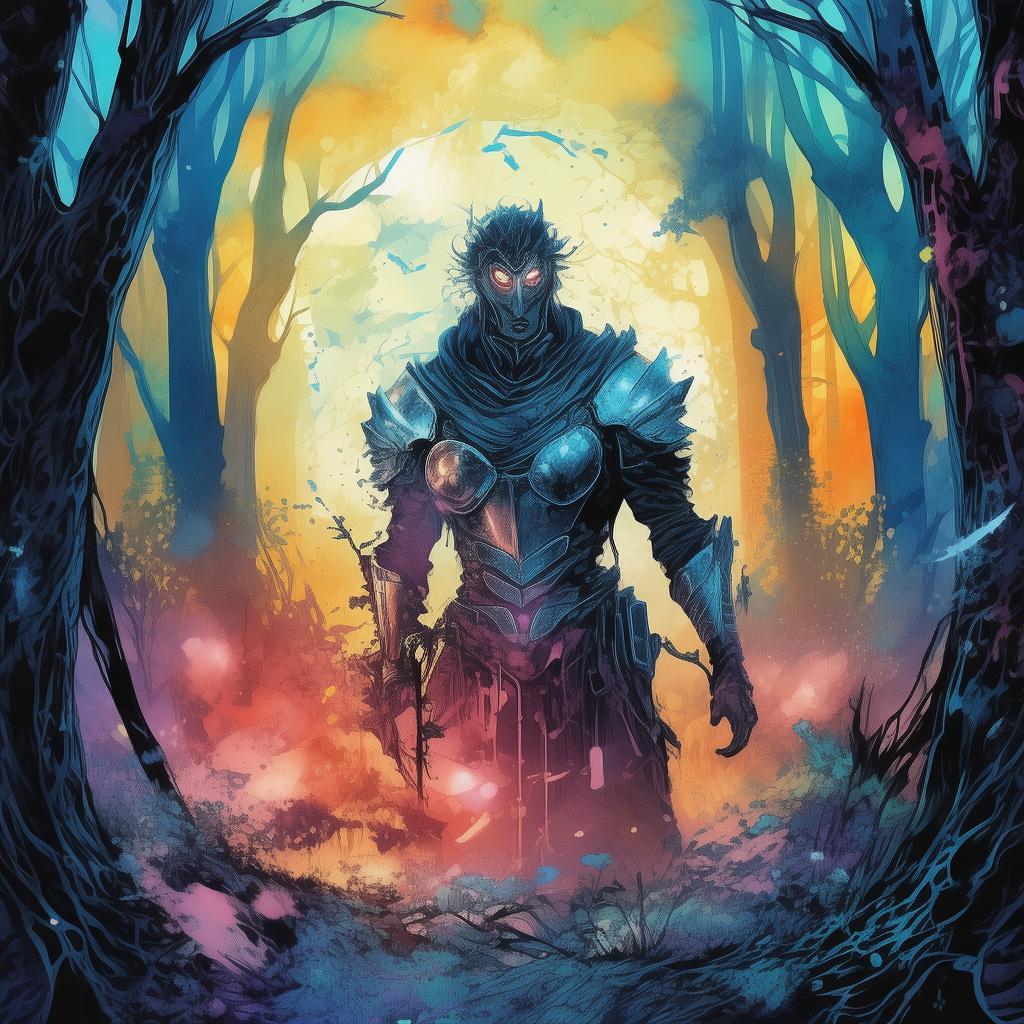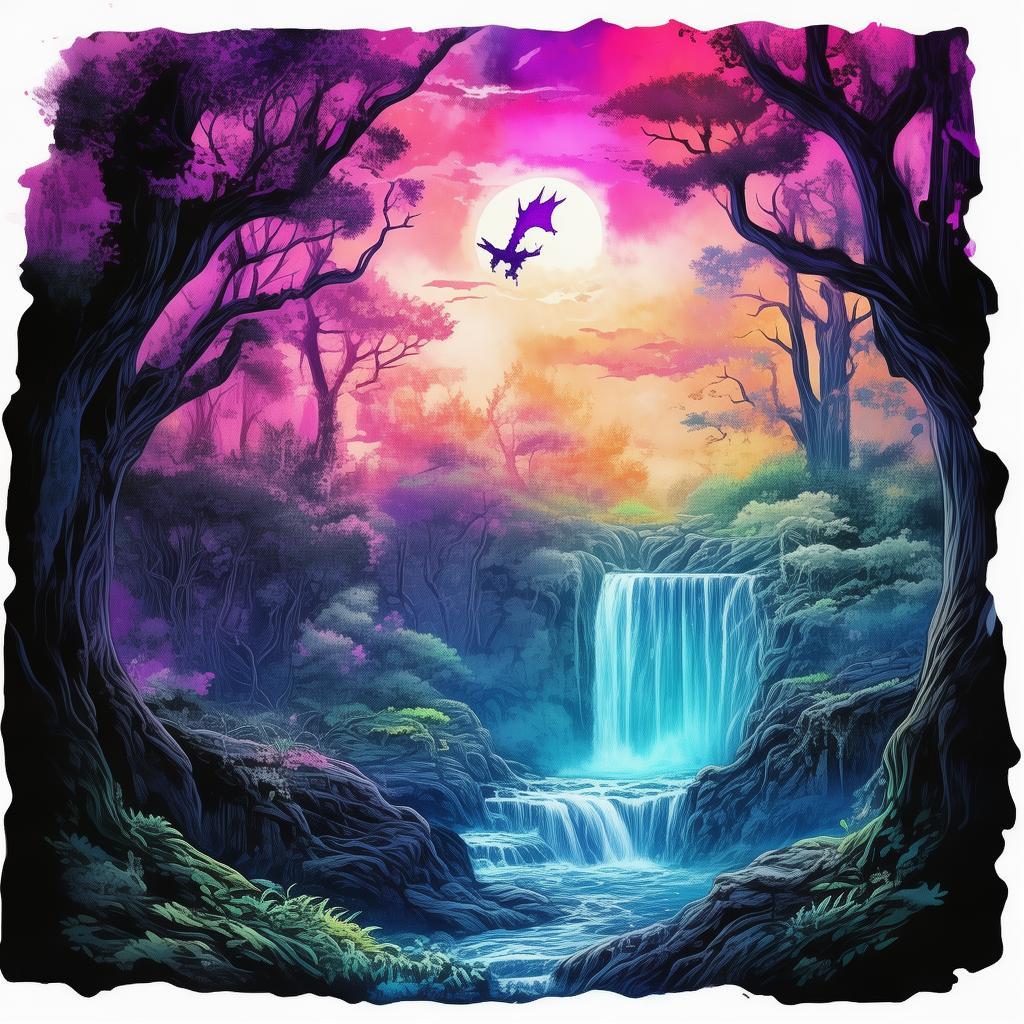The Last Symphony of the Neon Courtyard
In the sprawling metropolis of Melbourne, where the past and future intertwined like the roots of an ancient tree, there existed a place known as the Neon Courtyard. This was a sanctuary of lights, where the city's denizens came to trade, to listen, and to dream. Here, music was currency, and the most skilled musicians could earn their place among the elite, their songs echoing through the wires and resonating in the hearts of the people.
Among the throngs of performers, there was a young man named Kael, whose fingers danced over his electric violin with a grace that belied his years. His melodies were like the whispers of the wind, delicate and haunting, capable of soothing the weary soul or stirring the heart to rebellion. Kael's dreams were simple: to play in the grandest hall, to compose a symphony that would change the world.
One evening, as the neon lights flickered and danced in the wind, Kael performed beneath the towering spires of the Neon Courtyard. His music was a beacon of hope in a world that was slowly being consumed by darkness. But as the night wore on, a shadow fell over the courtyard. A group of cloaked figures emerged from the shadows, their faces obscured by the darkness of their garments.
The leader of the cloaked figures, a man known only as The Overseer, addressed the crowd. "The time for whispers is over. The time for action is now." His voice was a low, menacing growl, and the crowd fell silent, awaiting his next command.
Kael, who had been lost in his music, felt a chill run down his spine. He had heard the rumors, the whispers of a revolution, but he had dismissed them as the ramblings of the desperate. Now, as The Overseer's words hung in the air, Kael realized that the revolution was no longer a whisper, but a roar, and he was standing at its heart.
The Overseer continued, "We have chosen our leader. He will lead us to a new dawn, a dawn where the oppressed will rise and claim their place in the sun." The crowd erupted in cheers, and Kael felt a surge of emotion, a mix of fear and excitement. He had never been part of anything so grand, so powerful.

But as the night wore on, Kael began to question his place in this new order. The Overseer's vision was one of power and control, a world where music was used as a tool of oppression rather than a source of freedom. Kael's symphony, the one he had been working on for years, was meant to be a celebration of life, not a tool for tyranny.
The conflict deepened as Kael found himself torn between loyalty to his fellow musicians and his own ideals. He knew that standing against The Overseer would mean risking everything he had, but he also knew that silence would mean the end of the Neon Courtyard as he knew it.
As the climax approached, Kael found himself in a confrontation with The Overseer, their eyes locked in a battle of wills. The Overseer's voice was filled with a chilling determination, "You will play your symphony for me, or you will never play again."
Kael, feeling the weight of the courtyard's future on his shoulders, replied, "Then I will play it for the people, not for you. This symphony is for all who dream of a better world, and I will not let it be used as a weapon."
With that, Kael took his violin and began to play. The music was a mix of his own melodies and those of the revolutionaries, a powerful blend that resonated with the crowd. The Overseer, standing in the center of the courtyard, watched in shock as the people began to rise, their faces alight with hope.
In the end, Kael's symphony was not just a celebration of music, but a call to arms, a declaration that the people of the Neon Courtyard would not be silent in the face of oppression. The Overseer's grip on power began to wane, and the revolution gained momentum.
The Neon Courtyard became a beacon of hope, a place where music and freedom danced together in the glow of the neon lights. Kael's symphony was a legend, a tale of one man's courage and the power of music to inspire change.
And so, in the heart of Melbourne's futuristic dystopia, the Neon Courtyard thrived, a testament to the enduring spirit of rebellion and the transformative power of art.
✨ Original Statement ✨
All articles published on this website (including but not limited to text, images, videos, and other content) are original or authorized for reposting and are protected by relevant laws. Without the explicit written permission of this website, no individual or organization may copy, modify, repost, or use the content for commercial purposes.
If you need to quote or cooperate, please contact this site for authorization. We reserve the right to pursue legal responsibility for any unauthorized use.
Hereby declared.









